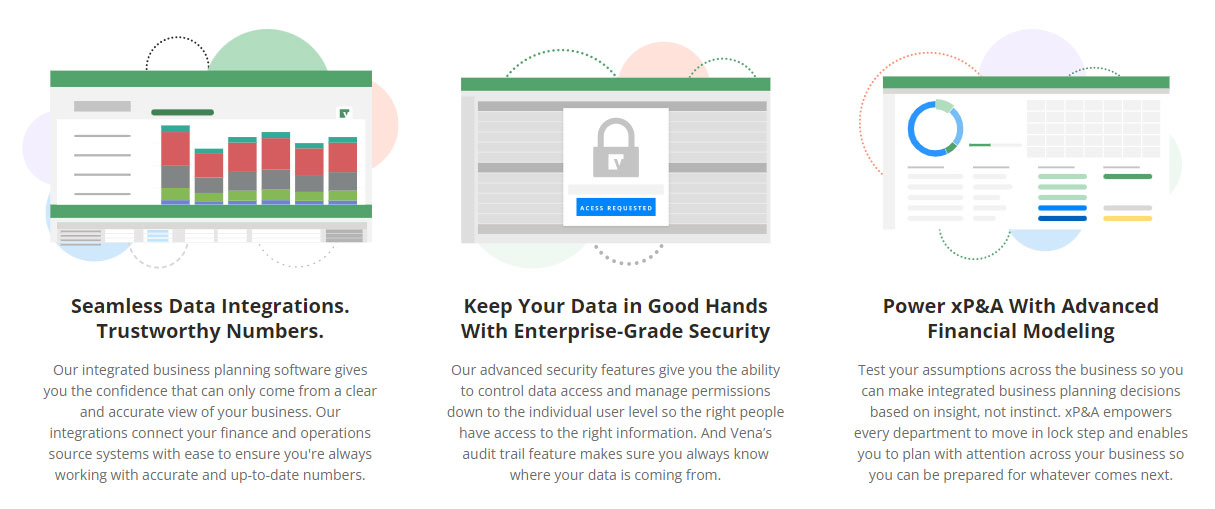This Is The Key To Improving Your FP&A System
Financial planning & analysis (FP&A) teams create robust financial projections to inform strategic decisions and create a roadmap for the future. As an FP&A analyst, your job is to build models to project future performance and then translate that into meaningful numbers and analyses that can be used to make business decisions.
But while a strong understanding of finance is expected, what sets great financial analysts apart is their ability to create meaningful business forecasts. This requires more than simply crunching numbers; you need to understand your audience and their unique constraints and priorities. In short, you need to have visibility into all areas of your business to provide strategic planning for the whole organisation.
This blog post looks at what this means for Finance Teams and how the use of modern software technology can provide Financial Planning & Analysis teams with greater insight, and enable them to provide more accurate forecasts, all within less time each month or other accounting period.
Budgeting and Planning Solutions
With the ever-increasing complexity of modern businesses, finance teams are under increasing pressure to create meaningful forecasts. Traditional data-driven forecasting models require enormous amounts of historical data to produce reliable results, which are then adjusted to account for future uncertainties. This approach is resource intensive, and can be difficult to maintain as the business grows.
Financial planning & analysis (FP&A) teams, on the other hand, use a combination of data and intuition to develop forecasts that are highly relevant to the day-to-day activities of the business. Business forecasts are an essential skill for finance professionals, but it’s often difficult for a finance department to produce meaningful forecasts for the business without access to the financial budgets and plans from the whole organisation which financial planning & analysis solutions can deliver.
Forecasting Software for Business
To improve budgeting and forecasting, many companies have turned to forecasting software to help finance teams create more accurate reports and projections. Financial forecasting software combines data-driven forecasting methods with intuitive visualisations and provides finance teams with the tools they need to create high-quality forecasts. This in turn frees up resources to focus on other department responsibilities.
Businesses have a wide range of options when it comes to forecasting software, and many finance teams are turning to cloud-based solutions to reduce the time and resources needed to develop forecasts. The right choice of forecasting software is therefore critical and allows finance teams to build custom models based on their unique needs for their fp&a system.
For example, a finance team may want to build a model that primarily uses historical data, while another department may want to build a model that primarily uses current internal data. But ultimately, the FP&A team will need visibility of the figures.
This approach provides more accurate forecasts, and it needn’t require a huge financial investment. In fact, you can use forecasting software to build robust models based on your existing Excel based models, with minimum modifications and implementation time, but maximum benefit to the business.
FP&A Software For All?
The ability to provide the finance team with company-wide visibility is regarded by many as one of the most exciting benefits of using forecasting software. By incorporating detailed planning and analysis dashboards into the planning and analysis software platform, businesses are able to provide their finance teams with the information they really need, and all in a controlled working environment.
 Image courtesy of Vena Solutions
Image courtesy of Vena Solutions
For example as illustrated above, Vena Solutions provides fast and easy access to multiple company databases and systems, securely, while enabling an agile user interface which has the familiarity and flexibility of Excel. This concept is referred-to as the xP&A platform.
What is xP&A?
xP&A – Extended Planning and Analysis – is a term first adopted by Gartner in a paper published in October 2020. The concept that it describes is not new, but modern FP&A software applications are making it far easier to attain, even for relatively small companies. So, the benefits xP&A can deliver enable integrated:
- Cashflow Planning
- Workforce Planning
- CapEx Planning
- Revenue Planning
- Sales Planning
As the name implies, an Extended Planning and Analysis (xP&A) approach to your planning processes will enable better analysis of all business operations, which in turn of course, provides the ability to deliver more accurate financial forecasts.
Conclusion
There are a number of different ways to budget and plan your company forecasts. Traditionally, these in-depth processes take many months to complete. Now, there are tools that do a lot of the heavy lifting for you and automate the process to enable the FP&A Team to provide greater financial insights into all company operations.
Finance teams can now create multi-dimensional projections, based on all areas of the business, and provide the finance team with the information they need to provide greater benefits to the business, including:
- A single source of data and analytics across the organisation
- A more efficient tool than traditional spreadsheets for planning
- More detailed information than traditional spreadsheets
- Increased transparency and knowledge across the company
- Improved quality of forecasts
Find out more about how you can benefit from an xP&A approach to financial forecasting with our Solutions Brief which you can download and keep for reference.
If you would like to talk to us about any of the concepts in this blog, please get in touch via this website, or call us on +44 (0)20 7735 7711.





